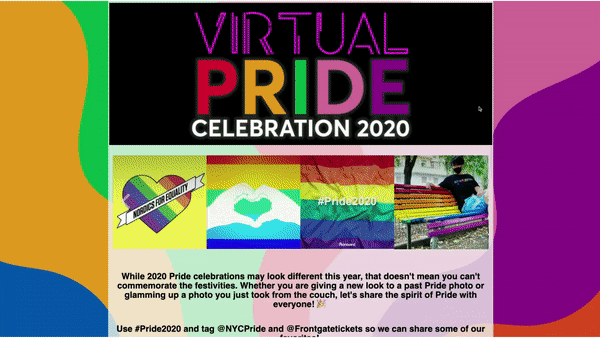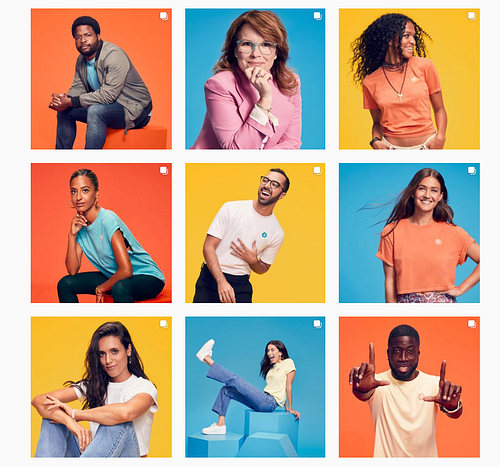Our digital age has made Inclusive Marketing critical - both in our own lives and with considerations to our business. Younger generations are introducing new ideas around consumerism and older generations are changing their purchasing considerations. To reach an increasingly diverse audience, we need more authentic engagements. That means inclusion is critical to the marketer, to truly represent global customer’s needs with campaigns that are relevant and representative.
So where do you start? Let's start with defining what Inclusive Marketing is and dive into some ideas about how to evolve your fan marketing strategies.
Understanding Inclusive Fan Marketing
Inclusive fan marketing is about understanding what makes your fan-base unique and embracing it. With inclusive marketing, you highlight or solve for an area where exclusion exists. By showcasing what's unique about your fans and how your brand supports them, you can uncover new audiences, by reaching more people whose lifestyle aligns with your brand values. This requires more than an image or tag line. To create campaigns that resonate with fans, focus your audience research, team structure, and editing on inclusion.
Why Should You Care About Inclusive Marketing?
Fans want visibility and focus
Fans want to know that you consider their thoughts, needs, and pain points. Our growing population diversity means that we should rethink how we connect our products and services with people. Consider the following:
Women make 89% of buying decisions, with an estimated US$31.8 trillion in consumer spending
15% of the world’s population experience some form of disability, but only 1 in 10 have access to the products and services they need
20% of millennials identify as LGBTQI+, and the buying power of the LGBTQI+ community is $3.7 trillion
Fans no longer think only about themselves
A consumer survey done by Google and the Female Quotient discovered that people are more likely to consider, or buy a product after seeing an inclusive ad. In fact 64% of those surveyed said they took some sort of action after seeing an inclusive or diverse ad.
- This percentage is higher among some consumer groups including Latinx+ (85%), LGBTQ (85%) and millenials (77%).
Ads that speak to inclusion will increase brand loyalty and enhance brand perception.
How to Achieve Inclusion in your Marketing
1. Research your Fan Audience

Inclusive Marketing does not mean addressing groups that have no relevance or interest in your products or services. While you should respect everybody, you need to establish that you understand your fans and what they gain from your brand or organization. There’s no need to inspire pitches like SNL’s Cheetos campaign.
Look at the available data to understand documented representation (i.e. demographics), and then look deeper. Learn what it’s like to be in their shoes. Look at how they're excluded from an experience, how a product or information could help them participate, or gaps that are not addressed for them. You can go to more industry events, conduct focus groups or ask other team members to gain this insight and solve for exclusions.
Then develop your fan audience personas to reflect your diverse fans; what is important to them and the value they get from your business.
Example: Microsoft’s “We all Win” - Innovating for a Unique Audience:
Microsoft discovered that children with certain physical disabilities or missing limbs were having trouble using traditional controllers to play video games. They used it as an opportunity to create an alternative controller that used touchpads instead of buttons. They also opened a channel of communication where people who still couldn’t use the controller could write to them requesting customizations.
Their campaign stressed commitment to their whole community, with the tagline, “ When everybody plays, we all win.”
What worked well with this campaign?
The campaign was authentic to their fans with a real-world impact, which resulted in:
- More trust in the Microsoft brand, from customers with disabilities even if they were not gamers
- Positive perception because their fans recognize what Microsoft will do for a unique group of customers
2. Diversify Your Team
 To ensure authenticity with Inclusive Marketing, you need an inclusive culture created by Diversity and Inclusion (D&I) in your organization. Look at your team and see how it reflects the diversity of your audience. If there is a large cultural distance between your team and the market, you won’t be as good at executing authentic campaigns. By bringing in the talents of those overlooked, you build an organization that is able to check its biases and uncover more creative expressions. Best of all, building a diverse team and valuing their input will drive innovation in your marketing and benefit your organization overall:
To ensure authenticity with Inclusive Marketing, you need an inclusive culture created by Diversity and Inclusion (D&I) in your organization. Look at your team and see how it reflects the diversity of your audience. If there is a large cultural distance between your team and the market, you won’t be as good at executing authentic campaigns. By bringing in the talents of those overlooked, you build an organization that is able to check its biases and uncover more creative expressions. Best of all, building a diverse team and valuing their input will drive innovation in your marketing and benefit your organization overall:
- In a study, Deloitte found that organizations with inclusive cultures were six times more likely to be innovative and agile, and eight times more likely to achieve better business outcomes
- BCG found that teams with above-average diversity in management, reported innovation revenue that was 19% higher than companies without
Example: The GIST - Using Unique Team Perspective:
An example of an organization using its team’s make-up to inclusively market is The GIST.
Three friends from University founded the GIST after experiencing the lack of community for female sports fans first hand. They took it upon themselves to create a community that respects and encourages women's voices. The GIST is a newsletter community, where they present bite-sized content about all things sports in a digestible, and fun tone - from a woman’s perspective.

What worked well?
- Found an exclusion to solve for and used the expertise of team members affected by this exclusion
- Are working to change the statistics around sports coverage and women (currently less than 14% of sports journalists are female, and only 4% of media coverage is on female athletes)
- Grew their subscriber base to 40K in just one year, and have created strong partnerships within the sports industry, including MLSE and Lululemon
For more tips about how to market sports to women, be sure to check out our blog about
Marketing Sports to Female Fans
3. Edit for Inclusion & Highlight Real Stories:
 To ensure your marketing reflects inclusion, your writers and editors need to avoid assumptions and think critically about what they know. They should use style guides when in doubt about phrasing and encourage team members to ask difficult questions so they can make relevant edits.
To ensure your marketing reflects inclusion, your writers and editors need to avoid assumptions and think critically about what they know. They should use style guides when in doubt about phrasing and encourage team members to ask difficult questions so they can make relevant edits.
Next, highlight real stories when you can. If your brand has fans or employees with similar experiences to the audience you are trying to reach, use their stories in your marketing campaigns. UGC is a fantastic way to highlight your fans, acknowledge their experiences and make them feel heard.
Example: Front Gate Tickets - Inviting Fan Interaction
Front Gate Ticketing collaborated with NYC Pride to create a Photo Frame Campaign through Tradable Bits.
The campaign encouraged fans to upload photos to their branded photo-frame, get creative with decorations, and share their images on social to strengthen their community connection to Pride.

What Worked Well?
- The campaign reached out to Front Gate's community and opened a channel for them to express themselves
- The company was able to build partnerships with NYC Pride, and highlight real stories to their fans.
- Created a safe and fun atmosphere, where they championed LGBTQI+ inclusion
Example 2: "Find Me On Bumble" - Creating Connections With a Diverse Audience
Bumble’s “Find Them On Bumble” campaign is a perfect example of creating inclusion by highlighting its own users.
With the campaign, Bumble launched a webpage, video campaign and Instagram account, to highlight their inspiring Bumble users from New York City. The video campaign focused on celebrating the stories of their diverse audience. Within the video, you see clips from a political operative, an entrepreneur, an opera singer and more, telling their story or offering advice. The users invited to Bumble’s photoshoot were also highlighted on their Instagram.

What Worked Well?
- The campaign focused on real people that you could find and match with on Bumble.
- Bumble was able to market its customer diversity as one of its biggest assets by highlighting user stories
- Their business is about connecting people - and through making inclusion core to their marketing strategy, they have broadened their prospective audience
4. Promote Accessibility Across all Channels
You have created the perfect content for your campaign, now what? If you are aiming to be inclusive in your marketing, you should think about how your audience will receive your message. Consider the following when publishing your creative assets:
- Navigation: try to include navigation for people who do not hear or see as well as the rest of your fans.
- Accessibility: Avoid distinguishing options by colour only and use alt-text for every digital image published. With videos and interviews, consider using captions and include transcripts for your audio or video assets.

Later has released a great guide for inclusive marketing on Instagram - which includes steps to create an alt-text for your images, and captioning apps to caption your stories. For more marketing tips on Instagram, check out our blog about marketing to fans on Instagram
Key Takeaways
The focus of Inclusive Fan Marketing is on the fans, where there should be empathy and compassion for each individual. Inclusive fan marketing leads to positive results when executed thoughtfully, so avoid thinking of it as a side project or a trend for your organization. In the end, you want to avoid campaigns like Cadbury Dairy Milk’s Unity Bar, where you trivialize serious issues despite good intentions.
Inclusion in your marketing is important, but it isn’t as simple as an image or checklist. It requires embracing the opportunity to think differently and incorporating diverse voices. Once you get there, you will do good for your fans and your business.
Create your own meaningful activations using fan data. Contact us today for a free ideation session.
